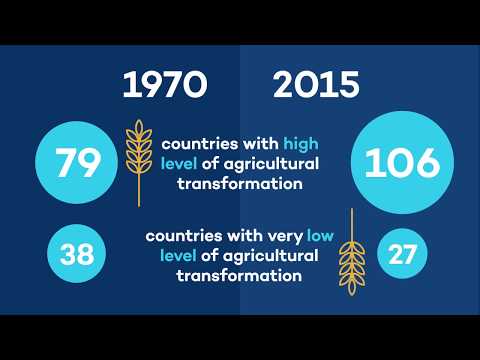Achieving agricultural transformation in a country – the transformation of an agri-food system from a high prevalence of subsistence farming to high productivity, so that poverty falls and food security increases – is contingent on many factors in the country, including its policies. Policy has real ramifications for the lives of farmers and those at risk of hunger, and not always through obvious causal chains. Through that lens, this project sought to analyze how policy can hurt or help agricultural transformation.
Over the last 45 years, countries have used many different policies that affect agriculture, addressing a variety of needs, implemented in a variety of contexts, and contributing to various levels of success toward SDG2, “Ending Hunger”. While the global situation has improved drastically, many countries are still lagging behind, and around 800 million people still lack basic access to food.
We systematically analyzed 117 countries over this 45-year period to understand their phases of agricultural transformation in a global context and to use learnings from their past policy experiences to inform future policy making. In particular, we identify countries that have faced similar challenges across space and time to promote South-South learning. We find opportunities to learn both from mistakes and successes.
Phases of Agricultural Transformation, 1970-2015
Our September 2019 update to the project takes a deep dive into a select group of countries that have either transformed their agricultural sectors or have the potential to do so. We also developed a taxonomy of policies that drive agricultural transformation and a policy brief on anti-agricultural bias, which can be found among our reports.





